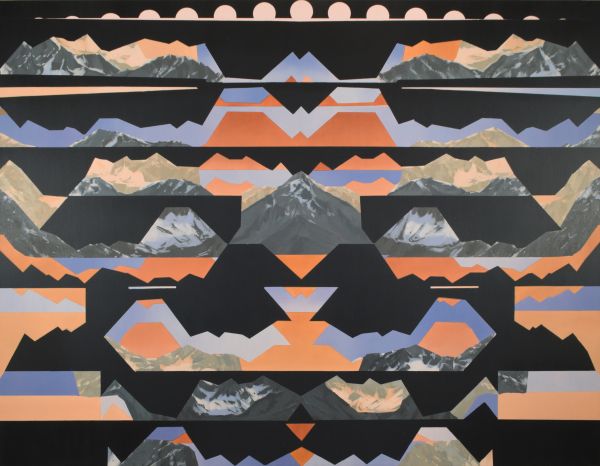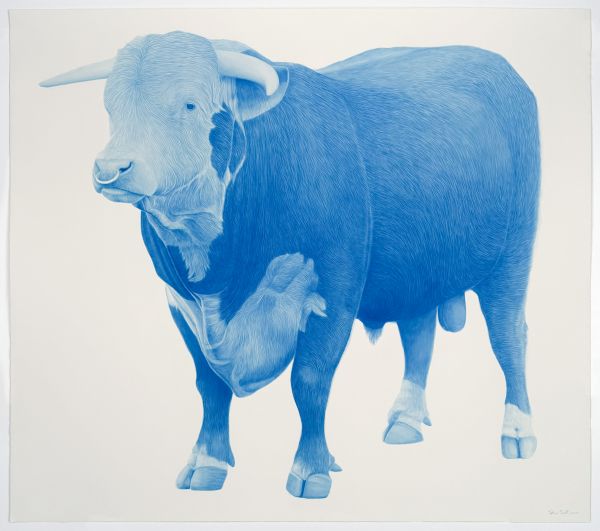
Brightness Bound
DENVER | 10.03.2025 - 11.29.2025 |
Artists: Beau Carey
Based in Albuquerque, New Mexico, Beau Carey is known for his immersive landscape paintings that reflect both physical encounters with remote environments and a deep questioning of how we perceive and represent space. In environments where traditional landscape conventions break down—where there’s no atmospheric perspective or stable point of reference, Carey challenges inherited ways of seeing. His compositions are built from memory and shaped by the concept of Notan, a design principle that balances dark and light. Beginning with cut-paper silhouettes drawn from remembered geographies, Carey distorts, mirrors, and reconfigures these fragments into patterns that reflect how we actually experience place: fractured by movement, time, distraction, and emotion. His paintings collapse multiple perspectives, horizons, and timelines into a single image. Forms appear as afterimages, shapes repeat and unravel, and spatial logic bends. The result is work that suggests continuity is an illusion—and that our perception of the world is far more dynamic and unstable than traditional landscape painting allows.

Hypernatural
DENVER | 11.14.2025 - 12.06.2025 |
Artists: Steve Snell
Steve Snell draws inspiration from the North American landscape: its history, mythology, wildlife, and the possibilities for adventure and self-discovery it continues to hold. These paintings blend memories from time spent in this landscape with dream-like visions of experiences not yet encountered. Using a vibrant, synthetic color palette, Snell celebrates an exaggerated image of nature while removing wildlife from their natural settings. His work imagines a connection to the natural world—an idealized image shaped in the studio and a desire for a more direct experience with it.

Mid-Century Western
DENVER | 12.12.2025 - 01.09.2026 |
Artists: Tracy Stuckey
This new body of work investigates the central Western dichotomy between the civilized interior and the wild exterior, a contrast traditionally used to define the region's cultural identity. These paintings deliberately collapse and reconfigure this boundary, forcing domestic elements outdoors and wilderness symbols inside—as seen when fashion logos are etched into rock or cowboys face off with a television screen—to question the Western's enduring power as both an image and an ideology. Influenced visually by mid-century modern design's attempt to seamlessly merge inside and outside spaces, the figures in the work inhabit a cinematic, nostalgic fantasy shaped by pop culture, yet subtle inclusions of contemporary fashion emblems and synthetic objects reveal that this frontier is merely a carefully staged spectacle, ultimately reflecting on the West's status as a persistent, constructed fantasy.